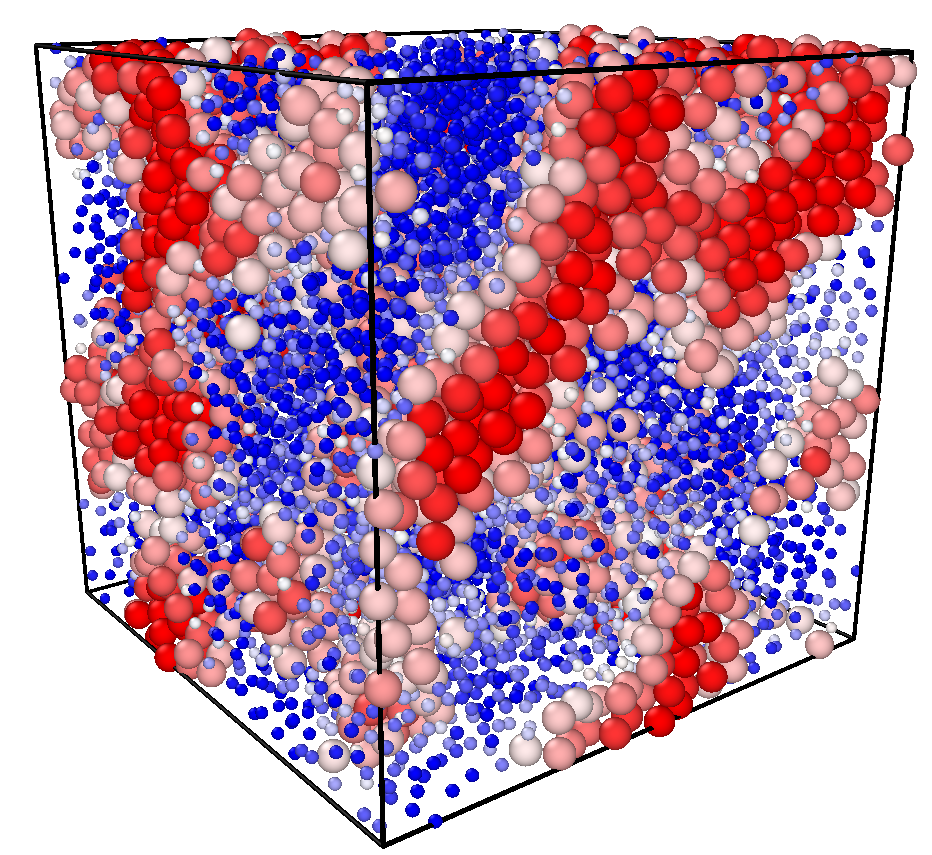Glassy substances are everywhere, yet this state of matter poses many puzzles. The basic picture is clear enough - glasses are solids that lack the regular atomic structure of a crystal. How and why they form, however, are questions that have kept physicists busy for decades. Now, research from Japan has shown that glass formation can be understood if liquid structure is properly described.
In Physical Review X, researchers from The University of Tokyo's Institute of Industrial Science (IIS) give a detailed study of the structural changes during glass transition. In a well-designed set of molecular dynamics simulations, they aimed to resolve whether the process is fundamentally thermodynamic (dependent on some form of static order) or dynamic (driven by random atomic motions).
The team simulated supercooled liquids near the transition point, the temperature where particle diffusion stops and an amorphous solid appears. The aim was to find a link between structural patterns and the slowing of atomic motion, i.e., whether atoms in emerging structures are less mobile than in disordered regions. If it exists, this structure-dynamics correlation would verify that thermodynamics controls the formation of glasses, just as for crystals. That would be a major step toward a universal theory. However, since glasses are apparently long-range disordered, the importance of local order is elusive.
In each simulation, the team quantified how well the atoms packed together in the cooling liquid by measuring a structural order parameter. As study author Hua Tong explains, "We were careful to define order as any local packing that was sterically favored, not just crystalline packing. When the atoms were classified by this criterion and then quantified by their environments, known as coarse-graining, a clear correlation emerged between structural order and dynamics." In other words: more ordered atoms were indeed less mobile.
Glass formation occurs on two timescales: a slow alpha (α) process and a fast beta (β) process. The link between these modes is - like much else in glass theory - shrouded in mystery. The IIS team found that the structure-dynamics correlation was strongest when a specific length was used for coarse-graining. This length, which gradually increases as the liquid cools, neatly corresponds to the characteristic length of dynamic heterogeneity that maximizes at the α timescale. Meanwhile, the size of the atoms themselves is linked to the fast β mode. Therefore, every glass-forming liquid depends on this pair of intrinsic, characteristic lengths.
"The discovery of these length-scales resolves two issues at once," author Hajime Tanaka says. "First, using robust statistics, we show that glass formation really is thermodynamic. Despite their apparent randomness, glassy liquids show subtle ordering, though less directionally than in crystals. Second, the α and β modes have a common structural origin, even though they follow different length-scales. This reveals an intrinsic link between these two important dynamic modes. Now, the question is whether the structure-dynamics link is more than just a correlation. In the future we hope to find a direct causality."
Journal article
Hua Tong and Hajime Tanaka, "Revealing hidden structural order controlling both fast and slow glassy dynamics in supercooled liquids", Physical Review X
DOI:10.1103/PhysRevX.8.011041
Research Contact
Hajime Tanaka, Professor
Tel: +81 3 5452-6125
Fax: +81 3 5452-6126
URL: http://tanakalab.iis.u-tokyo.ac.jp/Top_E.html
Material

